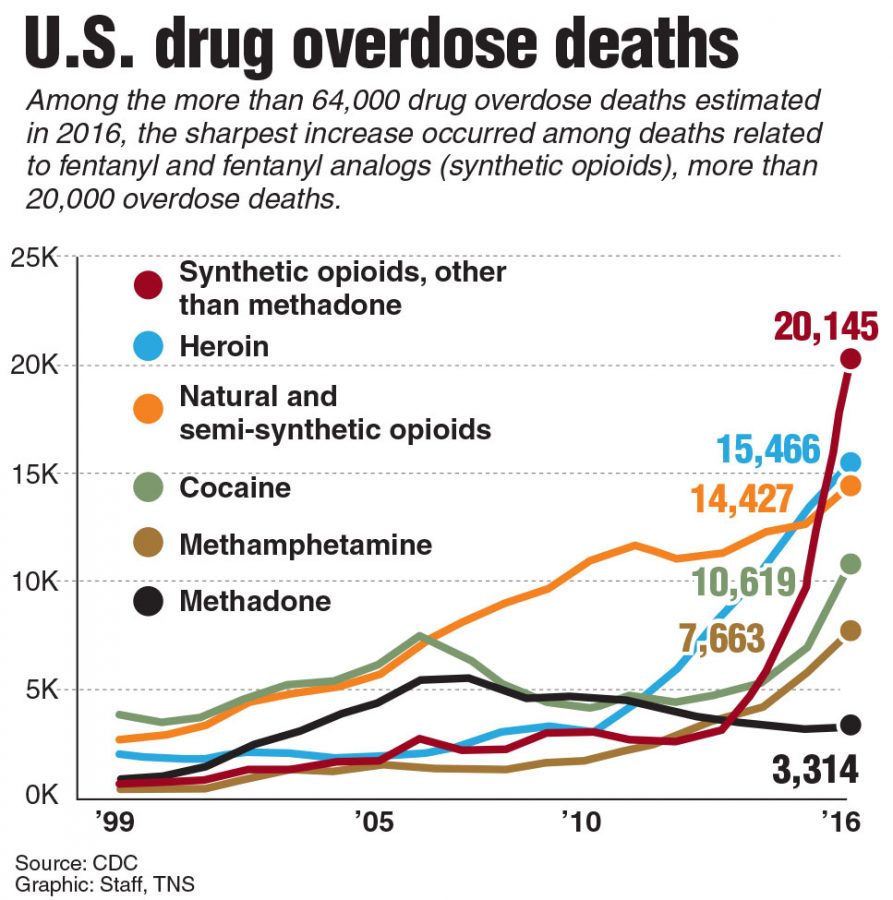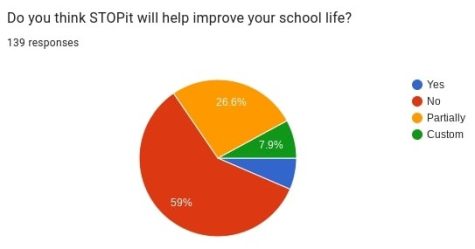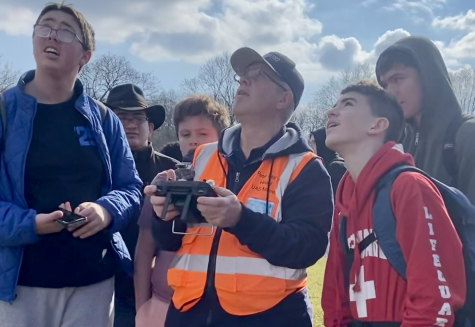Opioids Propel Crisis Across Nation
Chart showing U.S. drug overdose deaths
Assuming that drug overdoses increase at the same rate it has for decades, opioids will kill more than 93,000 people per year by 2027.
The National Institute on Drug Abuse reported that over 90 people die per day in the United States after overdosing on drugs that can be prescribed by doctors. 21 to 29 percent of people prescribed opioids misuse them, and 4 to 6 percent of those people graduate to heroin. The Centers for Disease Control reports that 26 percent of patients prescribed opioids for chronic non-cancer pain develop a dependence.
According to the NIDA, the opioid crisis began in the late 1990s, when pharmaceutical companies claimed that patients would not get addicted to opioids. This led to doctors prescribing opioids at higher rates. Subsequently, the drugs were widely misused by the time they were officially recognized as highly addictive.
Since then, the opioid outbreak has escalated to an extremely deadly epidemic. After 33,000 Americans were killed by opioids in 2016, and the CDC reported overdose deaths involving the misuse of opioids have quadrupled since 1999, the crisis has received attention on a national level. President Donald Trump declared the opioid epidemic a health emergency last year.
According to an article titled “Trump Declares Opioid Crisis a ‘Health Emergency’ but Requests No Funds” by Julie Hirschfield Davis of The New York Times, President Trump declared at a ceremony attended by families affected by opioid use, “No part of our society — not young or old, rich or poor, urban or rural — has been spared this plague of drug addiction and this horrible, horrible situation that’s taken place with opioids. This epidemic is a national health emergency.”
A study by the CDC reinforced Trump’s statement. The report stated that in the United States last year, 66.5 opioid prescriptions were issued per 100 people. A study by Michael L. Barnett, M.D. and his team, published in the New England Journal of Medicine, also found that patients treated by high-intensity opioid prescribers are 30 percent more likely to submit to long-term opioid use than patients who saw low-intensity prescribers.
“These are folks who come in for acute pain,” wrote Barnett. “There is a damaging effect of even that first initial prescription you get.” Barnett thinks the study is “a warning shot to doctors about understanding the risks of these medications and communicating them much more clearly—both to each other during training, as well as the patients.”
Opioids impact children as well as adults, but action has been taken to support affected students. Raymond J. Lesniak, a New Jersey senator, pioneered the concept of recovery schools for recovering students, and started the Raymond J. Lesniak Experience, Strength, Hope, Recovery High School in Union County, according to his article on nj.com, “Lesniak: In the Opioid Crisis, Recovery Schools for Children are Essential.”
“We have successful experience with recovery schools in New Jersey,” Lesniak wrote. “At the Raymond J. Lesniak Experience, Strength, Hope, Recovery High School our students graduate and go on to higher education. Our first graduate has started her sophomore year at my alma mater, Rutgers University, which has recovery housing and a strong students-in-recovery support group.”






